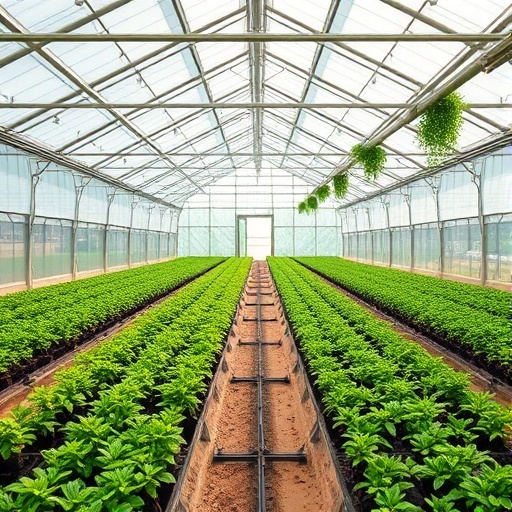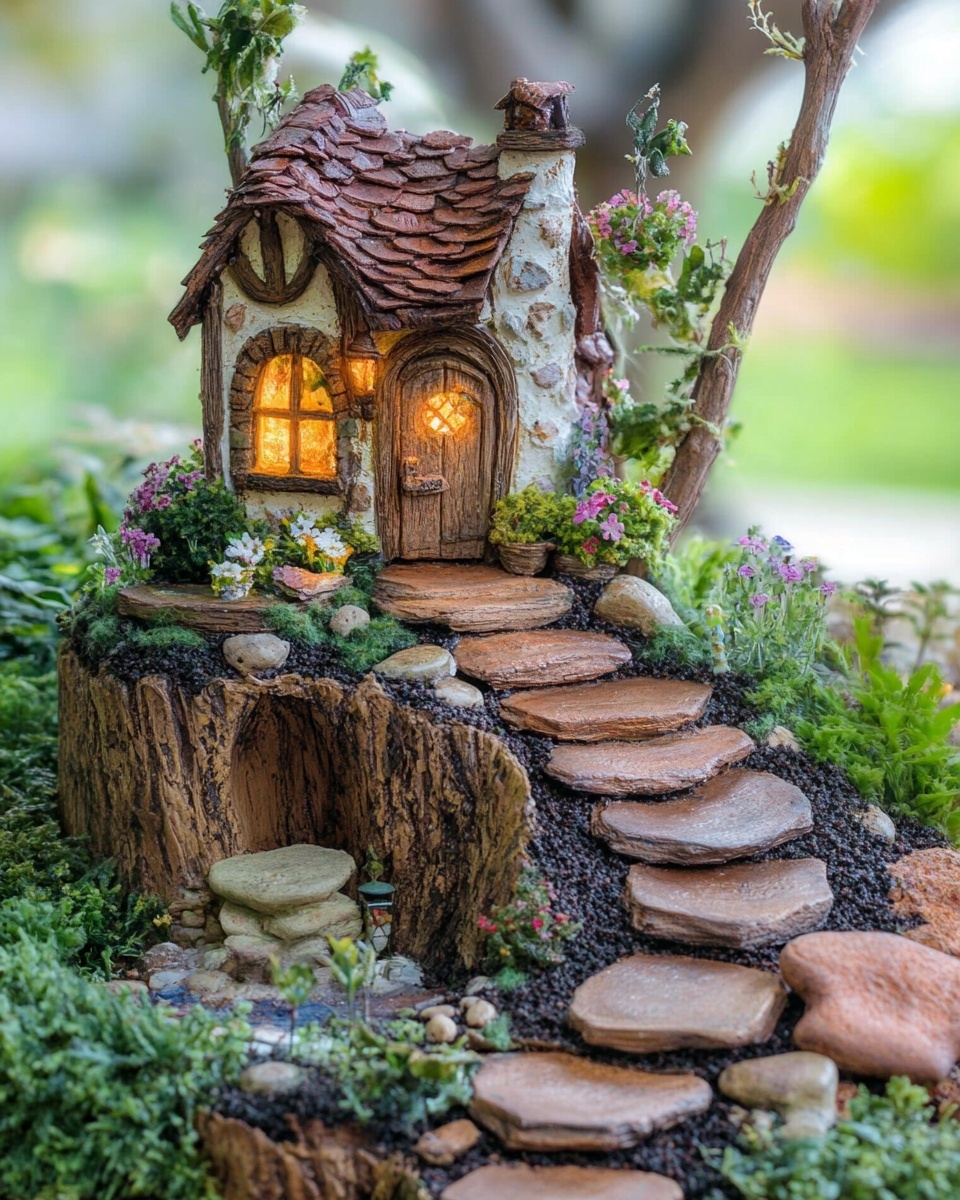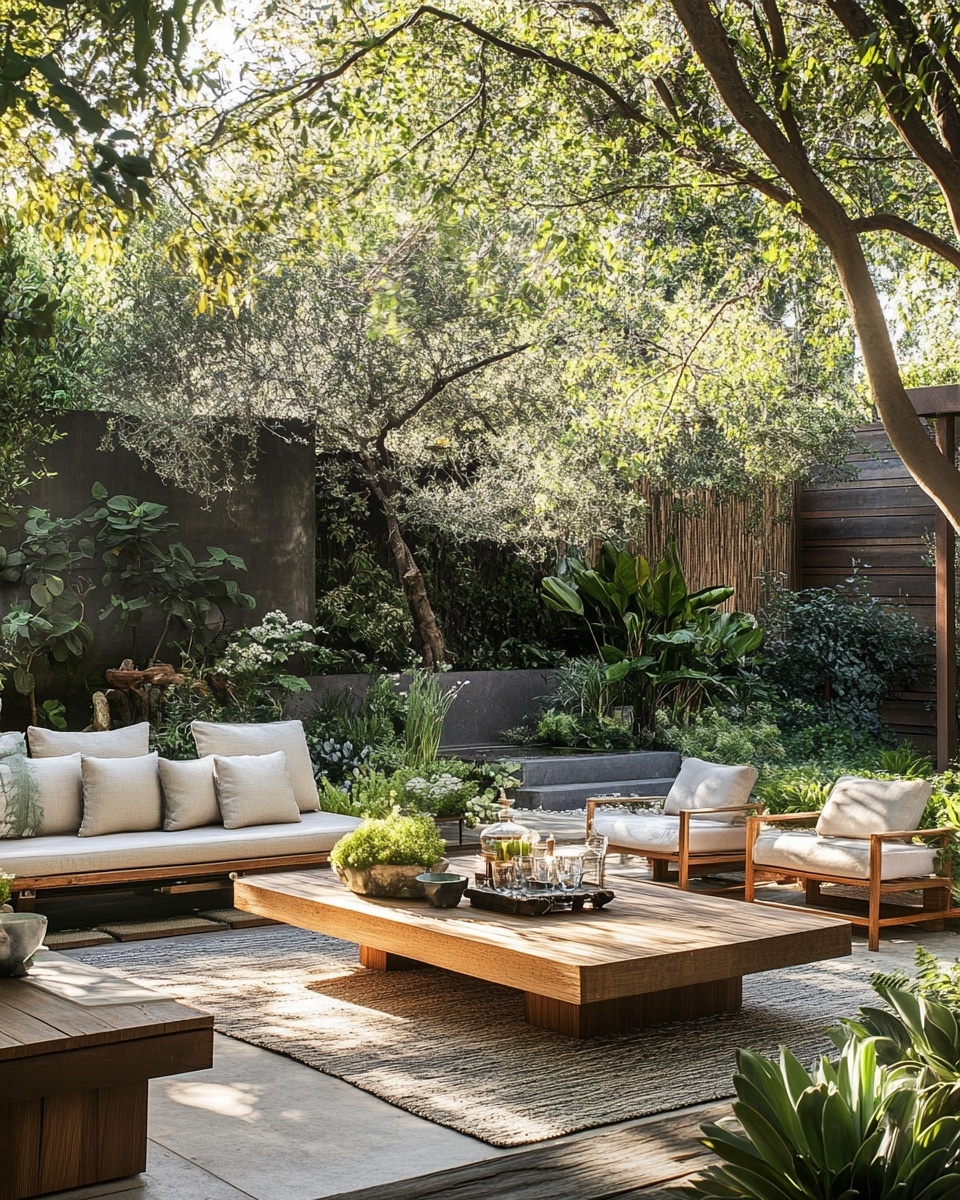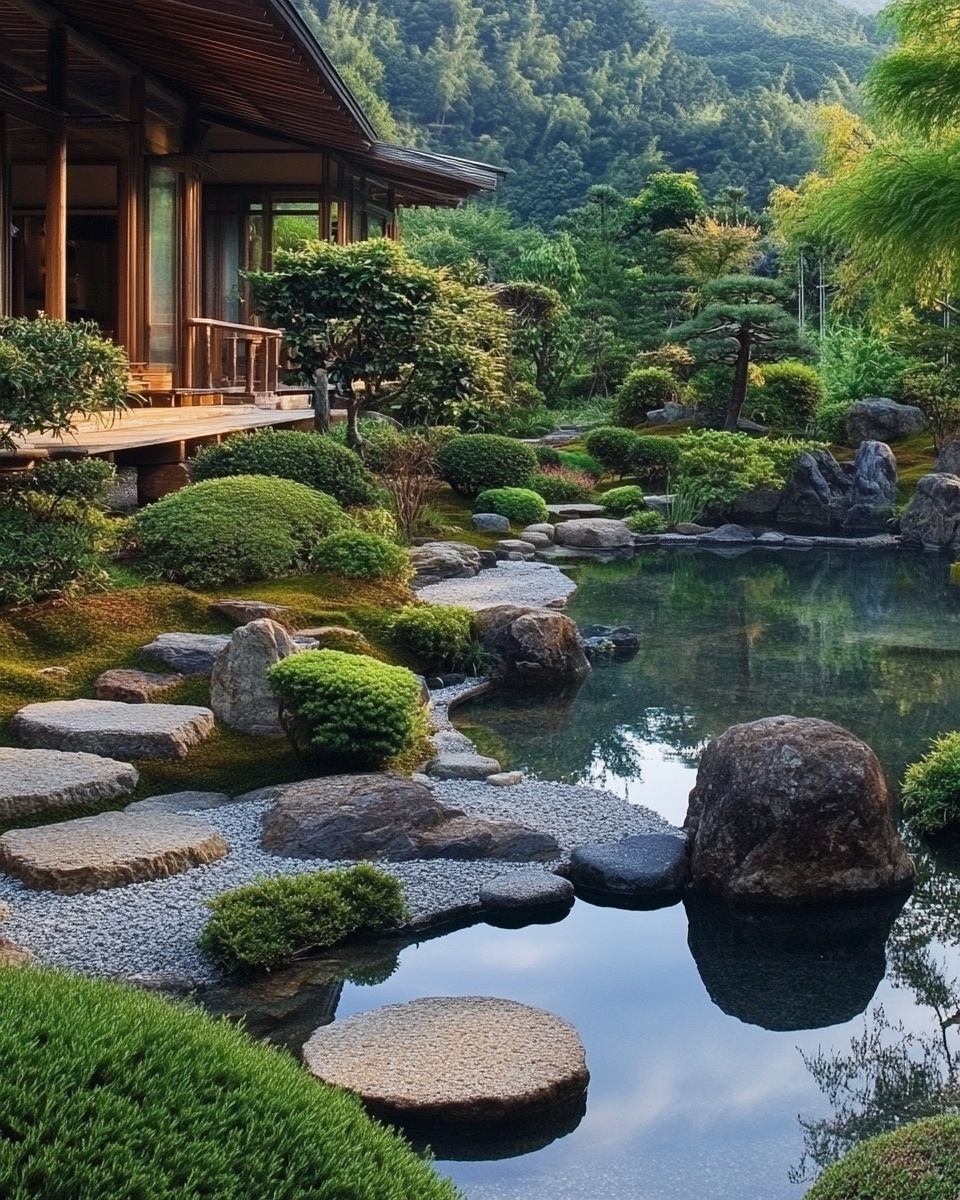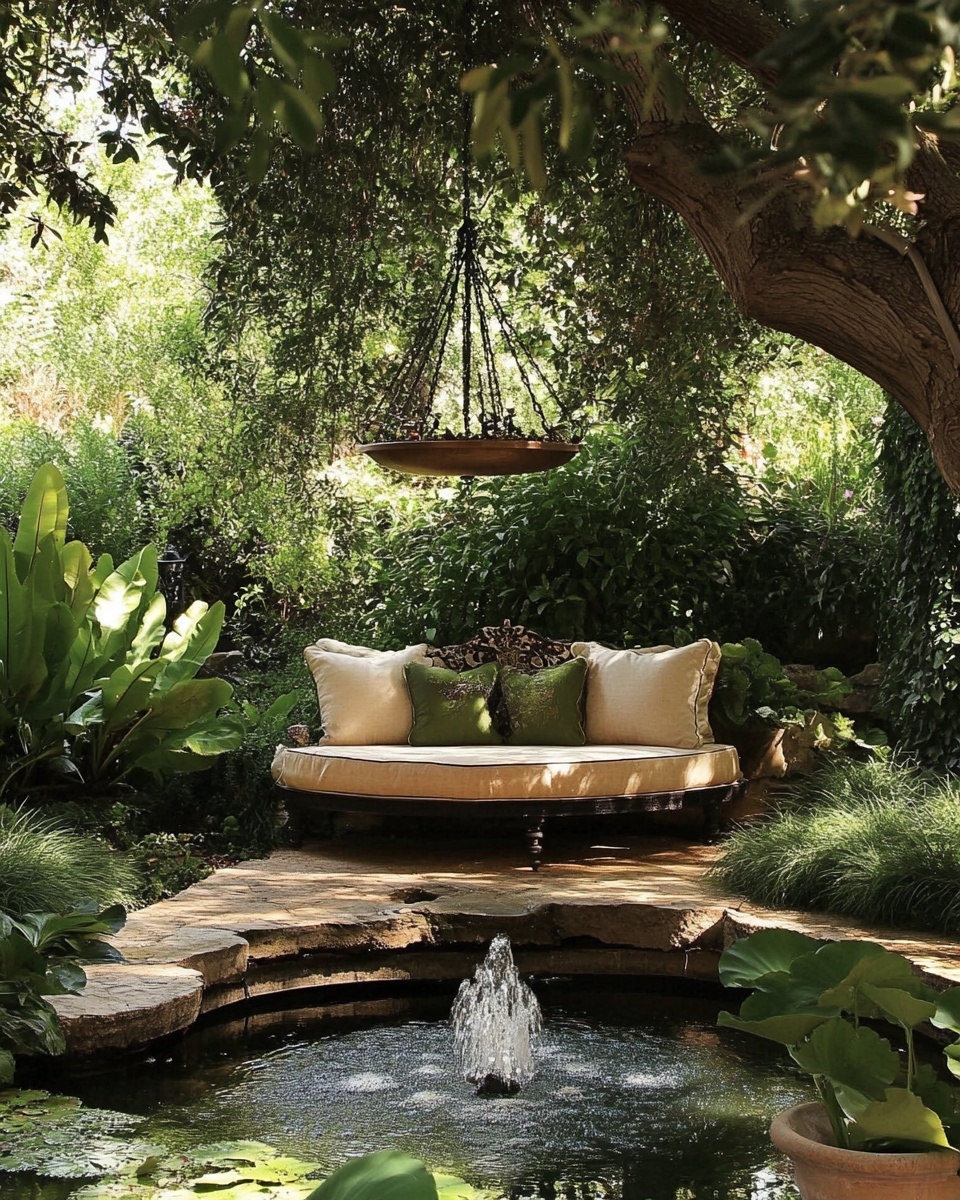Introduction
Did you know that an inefficient greenhouse layout can reduce your yield by up to 30%? Many aspiring greenhouse gardeners focus heavily on plant selection or watering schedules, often overlooking the critical role a well-designed space plays in maximizing productivity and minimizing effort. Crafting an effective greenhouse gardening layout is not just about aesthetics; it's a strategic move that dictates everything from light distribution and airflow to ease of maintenance and overall plant health. In this comprehensive guide, we'll dive deep into transforming your greenhouse into a thriving, high-yield haven, exploring various greenhouse gardening layout ideas that cater to different needs and scales. Get ready to optimize every inch of your growing space!
Tools & Materials Needed
Before we dig into the details of your ideal greenhouse gardening layout, let’s gather the essentials. A well-prepared gardener is a successful gardener!
- Measuring Tape & Graph Paper: Crucial for planning your layout to scale.
- Greenhouse Structure: Whether it's a small cold frame, a lean-to, or a freestanding unit, ensure it's clean and ready.
- Sturdy Shelving Units or Benches: Opt for galvanized metal or rot-resistant wood like cedar. Consider multi-tiered options to maximize vertical space. For eco-friendly alternatives, repurpose old wooden crates or sturdy pallets, making sure they are treated to resist moisture.
- Raised Garden Beds or Large Planters: Ideal for contained growth and better soil management. For budget-friendly options, consider DIY raised beds from untreated lumber or even galvanized feed troughs.
- Potting Mix: A high-quality, sterile potting mix is essential. Look for organic blends. If you're on a budget, consider making your own by mixing compost, perlite, and a dash of soil from your garden (ensure it's pest-free).
- Seeds or Seedlings: Start with what you love to grow! Consider companion planting for natural pest control and increased yields.
- Watering Can or Hose with a Gentle Sprayer: Even distribution of water is key.
- Small Hand Trowel and Pruning Shears: Essential for planting, transplanting, and maintenance.
- Thermometer/Hygrometer: To monitor temperature and humidity, vital for greenhouse health.
- Ventilation Aids: Fans, automatic vents, or louvered windows to ensure good air circulation.
Time & Effort Overview
Designing and implementing an effective greenhouse gardening layout is a foundational task, and the time investment varies.
- Planning & Design: 2-8 hours (depending on complexity and size).
- Assembly & Setup: 1-3 days (for shelving, raised beds, etc.).
- Initial Planting: 1-2 days.
- Ongoing Maintenance: Daily short checks (15-30 mins) and weekly longer tasks (1-2 hours).
The difficulty level ranges from beginner to intermediate. While selecting and arranging plants is straightforward, optimizing environmental factors like light and airflow requires a bit more knowledge. However, the initial setup is usually a one-time effort that pays dividends. For instance, plants in a well-ventilated greenhouse can experience up to 20% less fungal disease compared to poorly ventilated ones.
Step-by-Step Gardening Process
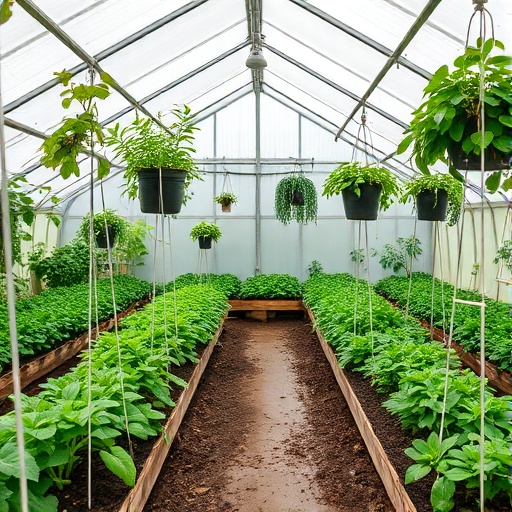
Here’s your action plan for establishing a stellar greenhouse gardening layout that truly performs:
Step 1: Assess Your Greenhouse Space
Start by thoroughly cleaning your greenhouse. Remove any debris. Measure its dimensions accurately – length, width, and height. Note the location of doors, vents, and any built-in features. Sketch out your greenhouse on graph paper, assigning each square a unit of measurement (e.g., 1 square = 1 foot). This visual plan is your blueprint. Don't worry if your initial sketch looks messy; it's a working document!
Step 2: Map Sunlight and Shade Patterns
This is crucial. Observe how sunlight hits your greenhouse throughout the day and across different seasons, if possible. Identify areas that receive full sun, partial sun, and shade. Use a compass to determine north, south, east, and west. South-facing areas generally get the most intense light. Mark these zones on your blueprint. This data will inform where to place sun-loving plants versus shade-tolerant ones.
Step 3: Define Functional Zones
Think about how you’ll use the space. Common zones include:
- Growing Zone: Where your plants live.
- Work/Potting Zone: A dedicated area for potting, mixing soil, and tool storage.
- Storage Zone: For pots, fertilizers, and other supplies.
- Pathway Zone: Essential for easy access to all plants without compaction.
Plan these zones first, then fit your elements within them.
Step 4: Plan Pathways and Accessibility
Pathways are the arteries of your greenhouse. Aim for a main pathway that is at least 2-3 feet wide for comfortable movement, especially if you’ll be moving wheelbarrows or larger pots. Secondary paths can be narrower. Consider materials like gravel or paving stones to keep the area clean and reduce soil splash. Remember, you want to easily reach every plant.
Step 5: Choose and Arrange Growing Structures
Now, populate those growing zones!
- Benches/Shelving: Place these along the walls, especially in sunny spots. Use multi-tiered shelving to maximize vertical space – you can effectively double or triple your growing area.
- Raised Beds: Install these directly on the ground in larger greenhouses. They offer excellent drainage and better control over soil quality.
- Hanging Baskets/Vertical Gardens: Utilize overhead space or walls for vining plants, herbs, or strawberries. This is a brilliant way to add plants without taking up floor space. Vertical gardens can increase growing area by up to 100% in a small footprint.
- Plant Spacing: Ensure adequate spacing between plants to allow for air circulation and light penetration. Overcrowding can lead to disease. A good rule of thumb is to allow growth room for the mature size of the plant, not just its seedling stage.
Step 6: Incorporate Essential Utilities
- Water Source: Plan for easy access to water. A hose reel or drip irrigation system can save immense time and effort.
- Ventilation: Position fans or ensure vents are unobstructed. Cross-ventilation is ideal.
- Heating/Cooling: If needed, consider placement that doesn't interfere with plants or pathways.
Step 7: Optimize for Light and Airflow
Once structures are in place, arrange plants based on their light requirements. Place sun-loving plants (like tomatoes and peppers) in the brightest areas, and more shade-tolerant plants (like leafy greens and some herbs) in slightly shadier spots or under taller plants. Ensure nothing is blocking vents or air circulation paths. Good airflow prevents humidity build-up, which is a major deterrent to fungal issues.
Step 8: Plan Your Work and Storage Areas
Dedicate a corner or a section of a bench as your potting station. Keep frequently used tools like trowels and gloves within arm’s reach. Store potting mix, fertilizers, and spare pots neatly on shelves or in containers. Think about vertical storage solutions here too!
Growth & Care Tips
A well-designed greenhouse layout is just the beginning. Consistent care ensures thriving plants.
- Watering Frequency: Greenhouse plants often need more frequent watering than outdoor plants due to higher temperatures and evaporation. Check soil moisture daily by sticking your finger an inch or two into the soil. Water until it drains from the bottom of the pot. Drip irrigation systems can provide consistent moisture and save water by up to 50%.
- Sunlight Exposure: Monitor plant growth for signs of too much or too little light. Leggy plants stretching towards the sun indicate insufficient light, while scorched leaves suggest too much direct exposure. Adjust shading or plant positions as needed.
- Pruning: Regularly prune dead or yellowing leaves and overcrowded branches. This improves air circulation and directs the plant's energy into fruit or flower production. For fruiting plants like tomatoes, suckering (removing side shoots) dramatically increases yield.
- Fertilization: Greenhouse plants in containers deplete soil nutrients faster. Fertilize regularly with a balanced, slow-release or liquid organic fertilizer according to package directions. Consider soil tests annually to determine specific nutrient deficiencies.
- Pest Prevention: Greenhouses can be magnets for pests. Implement integrated pest management (IPM) strategies:
- Regular Inspection: Check plants daily for signs of pests.
- Good Hygiene: Remove plant debris promptly.
- Beneficial Insects: Introduce ladybugs or lacewings as natural predators.
- Organic Sprays: Use neem oil or insecticidal soap for immediate issues.
Remember that a healthy, well-cared-for plant is naturally more resistant to pests and diseases.
Eco-Friendly & Sustainable Alternatives
Make your greenhouse a bastion of sustainability with these tips:
- Composting: Start a small compost bin or worm farm right inside or near your greenhouse. All your plant trimmings, spent soil, and kitchen scraps can be turned into nutrient-rich compost, reducing waste and providing free fertilizer.
- Natural Fertilizers: Beyond your own compost, use organic options like fish emulsion, seaweed extract, or bone meal. These slowly release nutrients and improve soil health long-term.
- Water Conservation: Install rain barrels to collect rainwater for your plants. A drip irrigation system, as mentioned, is highly efficient. Consider using self-watering planters for potted plants to reduce water waste.
- Recycled Materials: Repurpose plastic bottles into self-watering wicks, old tires into raised beds, or milk jugs into cloches for young seedlings. Check out this guide on DIY balcony herb garden with recycled containers for inspiration!
- Small Spaces: Don't have a large greenhouse? Many of these layout ideas apply to smaller structures. Consider vertical gardening solutions like tiered planters or wall-mounted pockets. For compact spaces, explore options like compact balcony herb garden layout plan or even indoor growing using grow lights for year-round production.
Creative Ideas & Uses
A greenhouse isn’t just for growing; it’s a sanctuary!
- Combine Plants Aesthetically: Think beyond utility. Group plants with similar care needs but contrasting foliage or flowers. For instance, combine vibrant leafy greens with trailing nasturtiums.
- Repurpose Garden Materials: Old watering cans can become decorative planters. Driftwood or interesting stones can add natural accents. Utilize old wooden ladders as vertical plant stands or for hanging tools.
- Integrated Seating Area: If space allows, tuck a small stool or bench into a corner. It creates a delightful spot for enjoying your green oasis or planning your next gardening moves. A well-placed bench can become a focal point, inviting introspection amidst your flourishing plants.
- Themed Sections: Dedicate a section to a specific theme, such as a "Herb Garden Corner" or a "Tropical Paradise" area for humidity-loving plants.
- Pinterest for Inspiration: For endless visual inspiration on creative layouts and repurposing, check out gardening boards on platforms like https://www.pinterest.com/janatjanay47/.
Common Mistakes to Avoid
Even seasoned gardeners make mistakes. Here’s how to sidestep the most common greenhouse layout pitfalls:
- Overcrowding Plants: This is the number one culprit for poor air circulation and pest/disease spread. Overcrowding can reduce individual plant yields by up to 40%. Always plan for the mature size of your plants. Space them out generously.
- Ignoring Light Requirements: Placing sun-loving plants in shade or vice-versa leads to stunted growth and poor yields. Always conduct a light assessment (Step 2) before planting.
- Poor Ventilation: A hot, humid, stagnant greenhouse is an invitation for fungal diseases like powdery mildew. Make sure your vents are open on warm days and consider adding a fan to ensure air movement.
- Lack of Accessibility: If you can’t easily reach your plants for watering, pruning, or harvesting, maintenance becomes a chore, and plants suffer. Plan those pathways carefully!
- Inadequate Drainage: Waterlogged soil suffocates roots and leads to root rot. Ensure all containers have drainage holes and raised beds are built with good drainage layers. Overwatering causes root rot in over 60% of houseplants and greenhouse edibles if drainage is poor.
- Not Planning for Growth: New gardeners often forget plants grow! A small seedling will become a large plant. Factor in the mature size when designing your greenhouse gardening layout ideas.
Maintenance & Storage Tips
Long-term success in your greenhouse depends on consistent care and smart storage.
- Seasonal Deep Clean: At least twice a year (e.g., between growing seasons), empty your greenhouse for a thorough clean. Wash down surfaces, sterilize pots, and replenish soil in raised beds. This breaks pest and disease cycles.
- Tool Care: Clean and sharpen your pruning shears, trowels, and other tools regularly. Store them in a dry place to prevent rust. A dedicated toolbox or wall-mounted organizer in your potting zone works wonders.
- Seed Storage: Store leftover seeds in a cool, dark, and dry place, ideally in airtight containers. Label them clearly with the date. Proper storage can extend seed viability for years. Check out our guide on how to grow a cut flower garden at home for more seed starting tips.
- Solutions for Common Issues:
- Yellow Leaves: Could indicate nutrient deficiency (feed them!), overwatering (check drainage), or underwatering (check soil moisture). Address the specific cause.
- Poor Soil Drainage: Amend heavy soils with organic matter like compost or perlite to improve drainage. For potted plants, use a high-quality potting mix and ensure drainage holes aren't blocked.
- Pests: Act quickly at the first sign of pests. Early intervention with organic solutions is more effective than waiting until infestations are severe.
- Temperature Fluctuations: For sensitive plants, consider adding shade cloth on very hot days or a small heater/insulation for unexpected cold snaps. Automated vent openers can also help regulate temperature passively.
Conclusion
Designing a productive greenhouse layout is an art and a science, but one that is incredibly rewarding. By strategically planning your space, understanding light and airflow, and implementing eco-friendly practices, you’re not just growing plants – you’re cultivating a vibrant, efficient ecosystem. We’ve covered everything from initial measurements and functional zones to advanced care tips and common pitfalls, equipping you with the knowledge to create a greenhouse that thrives.
Ready to transform your green space and see your efforts flourish? Start sketching your ideal greenhouse gardening layout today! Share your progress with us, or explore our other guides for more gardening inspiration.
FAQ
Q1: How do I determine the best watering schedule for my greenhouse plants?
A1: The best watering schedule depends on the plant type, size, pot material, and greenhouse environment. A good rule of thumb is to check the soil moisture daily by sticking your finger about an inch or two deep. If it feels dry, it's time to water. Plants in terracotta pots or exposed to more sun will dry out faster. Consider a moisture meter for added accuracy, or explore our article how to water balcony herbs without overwatering for more detailed watering techniques.
Q2: What's the optimal temperature range for a general-purpose greenhouse?
A2: For a mixed greenhouse with various common edibles and ornamentals, aiming for a daytime temperature of 65-80°F (18-27°C) and a nighttime temperature no lower than 50-55°F (10-13°C) is ideal. Specific plants may have narrower preferences, so group them accordingly within your greenhouse gardening layout.
Q3: Which soil mix is best for greenhouse growing?
A3: A high-quality, sterile, well-draining potting mix is generally best for greenhouse plants, especially those in containers or raised beds. Look for mixes containing peat moss or coco coir, perlite or vermiculite, and compost for nutrients. Avoid using heavy garden soil directly, as it can compact and harbor pests and diseases.
Q4: How can I maximize vertical space in a small greenhouse?
A4: To maximize vertical space, incorporate multi-tiered shelving, hang baskets from the roof or crossbeams, install wall-mounted planters, or use vertical garden systems. Trellises for vining plants like cucumbers or beans are also excellent for upward growth, making a small greenhouse gardening layout incredibly productive. You might find inspiration in vertical balcony herb garden design ideas.
Q5: What are the best plants for a beginner greenhouse gardener?
A5: For beginners, start with easy-to-grow plants. Leafy greens like lettuce and spinach, herbs such as basil and mint, radishes, and bush beans are excellent choices. Cherry tomatoes and small peppers can also be rewarding. These varieties are generally more forgiving of minor fluctuations in a greenhouse environment.
Q6: How do I ensure good airflow and prevent humidity issues?
A6: Ensure all vents (roof and side) can open sufficiently. Consider adding an oscillating fan to create constant, gentle air movement, which helps reduce localized humidity and strengthens plant stems. Proper plant spacing is also key to allowing air to circulate around individual plants, preventing moist microclimates.
Q7: Can I grow herbs and flowers together in the same greenhouse?
A7: Absolutely! Many herbs and flowers make excellent companions. Just ensure they have similar light, temperature, and watering needs. For instance, pairing fragrant herbs with flowers known to attract beneficial insects can enhance your greenhouse's ecosystem. Our articles on how to attract butterflies and bees with flowers or flower gardening tips for every season could provide more insights.
We hope these greenhouse gardening layout ideas inspire you to cultivate your dream green space! For more fantastic gardening tips and creative solutions, explore these related posts:
- Looking to grow herbs in a smaller space? Check out our guide on how to start a balcony herb garden in small spaces.
- If you're interested in beautiful blooms, discover some easy flowers to grow for beginners.
- For those with limited light, our post on herbs that grow well in shade or partial sun offers great options.
- Considering a specific type of flower garden? You might love our tips on best perennial flowers for continuous blooms.
- Don't forget to keep your indoor houseplant game strong with our article on the best houseplants for beginners.
